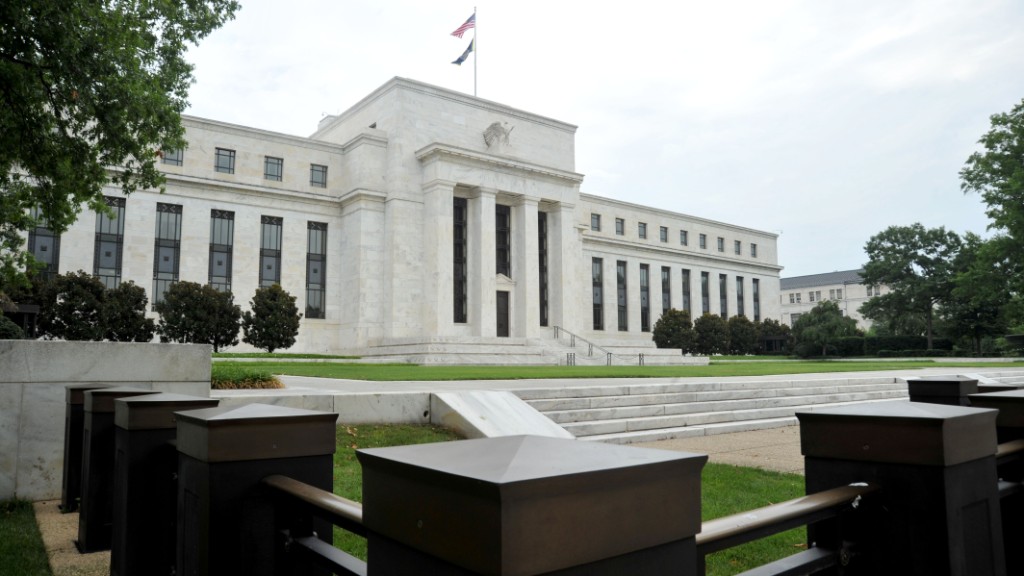
January was a brutal month for investors ... unless you bought Treasury bonds.
The yield on the 10-Year U.S. Treasury ended January at 1.67% -- down from 2.17% at the start of the year. It's also not too far from the all-time low of 1.39% it hit in 2012.
Bond rates fall as prices rise. While the Dow and S&P 500 both fell more than 3% in January, an exchange-traded fund that tracks long-term bonds -- the iShares 20+ Year Treasury Bond (TLT) ETF -- soared 10%.
So much for the bond bubble bursting.
Related: January was awful for stocks
Why is this happening? Shouldn't rates be much higher?
The Federal Reserve is likely to raise short-term interest rates later this year. That, in theory, would lead to higher long-term rates eventually.
And the dollar is on fire right now. Higher interest rates and strong currencies often go together like peanut butter and jelly.

But it all comes down to safety. Investors are scared of what's going on in Europe. They are nervous about a slowdown in China. The U.S. economy may not be in fantastic shape. But it's the best option out there.
"There should be an influx of more foreign capital," said Guy LeBas, chief fixed income strategist with Janney Montgomery Scott.
LeBas thinks that the 10-Year could fall as low as 1.45% and that the 30-Year bond could hit 1.75%. That would be a record low for the 30-Year, which is now hovering around 2.25%.
Related: Fed stays 'patient' but rate hikes are coming
He argues that as long as inflation remains low and investors even fret about deflation, it's hard to imagine long-term bond rates climbing significantly from current levels.
Individual investors are flocking to bonds too.
According to data from fund flow tracker EPFR Global, bond funds took in more than $10 billion last week -- a three month high. And EPFR said U.S. bonds attracted the most new money. Stock funds had inflows of just $3.1 billion.
At the end of the day, rising rates are usually a sign of an economy that's in high gear -- one where inflation is well above 2% annually.
But consumer prices have risen just 0.8% over the past 12 months when you include oil and food prices. Even when you back them out, prices are only up 1.6%.
That means the Fed probably won't raise rates too quickly. That should keep a lid on long-term rates.
Related: Here are the drivers of future economic growth
Good news for borrowers? As long as bond rates remain low, expect businesses and consumers to try and benefit.
Many corporations have been raising debt through bond sales because rates are cheap. Apple (AAPL), for example, announced a $5 billion bond sale on Monday. And Netflix (NFLX) disclosed plans to sell $1 billion in bonds.
Low rates are helping homebuyers and owners looking to refinance as well. The average rate on a 30-year fixed mortgage is 3.66%, according to Freddie Mac. That's down from 4.32% a year ago.
Sure, the bond rally probably has to end sometime. Still, investors that have been betting on a bond price collapse and subsequent spike in yields have been wrong for a while.
Many experts predicted that bond yields would soar once the Fed stopped buying bonds as it "tapered" its quantitative easing program.
But the 10-Year Treasury yield began 2014 at 3.03% and fell to 2.17% by year's end. That iShares 20+ Year Treasury Bond ETF? It easily outperformed stocks, gaining 25% compared to a 12% increase for the S&P 500.





